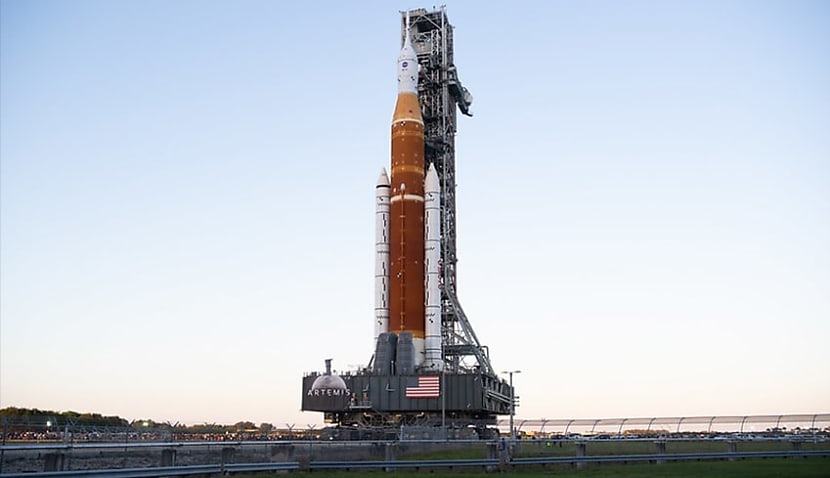However, Jared Isaacman reiterated his previous view that the United States could simultaneously pursue both missions in response to further questions from the Senate commerce committee.
The backing for the moon-focused Artemis program will be seen as a huge boost to Australia’s space industry, which has been tasked with creating a lunar rover to support the wider mission.
It comes after the White House proposed to cut half the funding to NASA’s science programs, which could potentially see high-profile projects like the Mars Sample Return cancelled.
It’s also led to speculation that the funding cuts could affect the more high-profile human space missions.
In response to questions posed by senators, though, Isaacman argued he was unaware of the details of any reductions to NASA programs.
“I have not reviewed or been party to any official discussions, but a 50 per cent reduction to NASA’s science budget does not appear to be an optimal outcome,” he said.
“If confirmed, I will advocate for strong investment in space science, across astrophysics, planetary science, earth science, lunar science, and heliophysics, and for securing as much funding as the government can reasonably allocate.”
Isaacman is President Donald Trump’s pick to run NASA but won’t be confirmed in the position until after the Senate reconvenes from a two-week break that ends 28 April.
When pushed to choose between Artemis or Mars, Isaacman said he would prioritise the former but insisted that NASA had previously juggled several major missions.
“Historically, NASA managed multiple complex programs simultaneously – Mercury, Gemini and Apollo – in an era with far less technological capability than we possess today.
“More than six decades later, with the advances in industry and innovation, I believe the world’s premier space agency should be capable of executing multiple major initiatives at a time.”
He also reiterated his support for using Boeing’s Space Launch System rocket and Lockheed Martin’s Orion capsule to make the journey to the moon, despite multiple delays and criticism from SpaceX founder Elon Musk.
“Once those obligations have been met,” he said of completing the mission to return humans to the moon, “I believe NASA should transition away from competing with the commercial sector and instead focus its world-class talent and infrastructure on developing the next generation of exploration technologies, including nuclear spaceships, as a logical next step.”
Space Connect reported in December how ELO2 beat AROSE to be picked to create Australia’s lunar rover.
The winning consortium, co-led by EPE and Lunar Outpost Oceania, said work would begin “immediately” on creating the final design while the Australian Space Agency finalises launch details.
The federal government granted ELO2 and AROSE $4 million last year to design an initial prototype for a rover, later named Roo-ver, that will be developed to explore the moon’s surface.
ELO2 was widely tipped to win after being the first to unveil its model late last year and subsequently creating four working versions, two of which were showcased at this year’s Australian Space Summit.
The winning design will collect lunar regolith, or moon soil, that will eventually be turned into oxygen to support a permanent NASA base.
Regolith can both become oxygen that humans can breathe or aid the production of rocket fuel necessary to support the launch of a rocket from the moon to Mars and beyond.

Adam Thorn
Adam is a journalist who has worked for more than 40 prestigious media brands in the UK and Australia. Since 2005, his varied career has included stints as a reporter, copy editor, feature writer and editor for publications as diverse as Fleet Street newspaper The Sunday Times, fashion bible Jones, media and marketing website Mumbrella as well as lifestyle magazines such as GQ, Woman’s Weekly, Men’s Health and Loaded. He joined Momentum Media in early 2020 and currently writes for Australian Aviation and World of Aviation.

